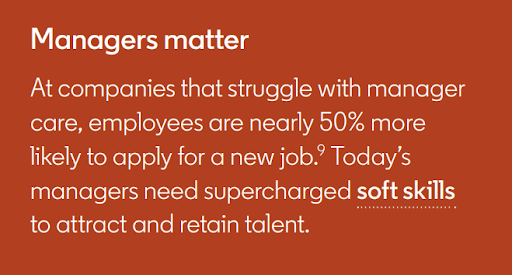Why Is Continuous Learning Important For An Organization?
Continuous learning definition — A continuous learning process is an important part of any organization, and it means learning new skills and knowledge on an ongoing basis.
When employees are constantly learning, they are able to grow and develop their skills in a safe and structured environment.
This growth leads to a higher ROI for the company as a whole, as well as increased job satisfaction and motivation among employees.
In addition, successful implementation of L&D activities can help drive organizational transformation, helping your business to stay ahead of industry trends.
Last but not least, developing necessary skills through L&D programs helps employees stay current with changes in their field – something that is vital if they want to maintain their career prospects over time.
With regular training opportunities available through L&D programs, employees can be sure that they’re staying on top of industry changes and developments.
In short: continuous employee learning is key to creating a better working environment and boosting company productivity overall!

A Continuous Learning Process Is The Future Of Work
Changing Procedures AND Mindsets
As an L&D professional, you have a great and difficult mission: to help create a continuous learning process that not only changes procedures but mindsets as well.
It’s no secret that learning and development is one of the most important aspects of any business.
Not only is it necessary to ensure that employees are kept up-to-date with the latest industry trends and developments, but it is also a great way to boost morale, team spirit and COMPLIANCE.
2021 data showed that 23% of companies lacked a formal compliance training plan.
Furthermore, it ensures that companies remain competitive and remain ahead of the curve.
But let’s face it, creating a continuous learning process is no easy task.
It requires the L&D professional to be creative, innovative, and resourceful in order to ensure that the process works effectively.
A continuous learning process encourages individuals to continually acquire new skills and knowledge….over and over again.
L&D professionals play a major role in developing and maintaining this continuous learning culture.
They must focus on creating an environment that encourages employees to learn and grow and provide them with relevant means to change procedures and their own mindset.
Furthermore, they must ensure that the learning culture is being properly nurtured and managed.
This involves creating an infrastructure to support learning, such as providing access to relevant materials, tools, and technologies, as well as providing adequate resources and support for employees.
Securing Manager Involvement In L&D Initiatives
Manager involvement is key to the success of any continuous learning culture, as managers are the ones responsible for driving change and implementing training initiatives.
They need to be actively involved in the process and have a clear understanding of the objectives and strategy.
They need to be actively engaged in the process, not just by attending training sessions but by helping to shape the strategy and making sure that employees are supported and given the right tools to achieve the desired outcomes.
According to a LinkedIn report, 49% of L&D pros have put increased attention on manager training and support this past year.
However, only 25% say their organizations are prioritizing training that’s focused on work-life balance and well-being.

Managers must also ensure that employees are given the freedom to learn and the trust to take risks.
This kind of involvement can help to create a culture of collaboration and innovation, where employees feel empowered to take ownership of their learning and development.
In order to secure manager involvement in their initiatives, L&D professionals need to understand their roles, responsibilities, and objectives.
They also need to be able to communicate the importance of the continuous learning culture to managers and other stakeholders.
It is also essential to involve all stakeholders in the planning and implementation process, ensuring that everyone is on the same page and that the objectives are clear and achievable.
To Wrap Things Up
Continuous learning has become a cornerstone of any successful organization.
With the ever-evolving nature of the modern workplace, organizations need to be agile and flexible in order to stay competitive and keep up with the pace of change.
To start building a continuous learning process throughout the organization, organizations should first focus on developing a comprehensive L&D strategy that is tailored to their specific needs.
This strategy should include elements such as identifying training needs, selecting the right learning methods, and designing a learning management system.
Finally, organizations should strive to measure the effectiveness of their continuous learning process.
This can be done by assessing the impact of their L&D strategy on employee engagement, performance, and productivity.
This will allow organizations to determine the areas of improvement and to make adjustments to the L&D strategy when needed.
To learn more about learning and development, click here.

